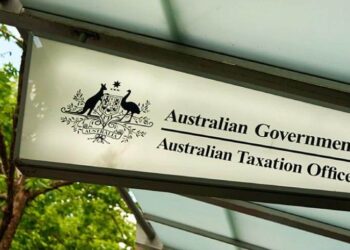Frank La Spada, SMSF specialist auditor and adviser for Seamless SMSF, said in a recent Accurium webinar that those working in the SMSF sector must remember that “not all qualifications are equal”.
“There are both part A and part B qualifications. Part A represents a financial statement inaccuracy, a financial error, financial misstatement, and that is quite different to part B, where we’ve got a compliance breach, compliance obligations not being met,” La Spada said.
“It’s really important that when you are talking with your auditor, and they’re referring to a qualified audit, you understand which one they are referring to. They may be talking about both, but if it’s only one, it is important to understand what that entails.”
La Spada said a part A qualification’s focus is financial statement inaccuracies, including incorrect asset valuations or incomplete financial records. These may impact ATO assessments indirectly and trustees may have to supply more financial statements or a re-audit may be required.
Part B qualifications focus on compliance with SMSF laws and regulations and relate to legal and regulatory breaches. These include breaches of SIS provisions, related-party transactions, and sole purpose test breaches. If they are significant, they are directly reportable to the ATO via an auditor contravention report. Additionally, they have the potential for penalties or enforcement actions by the ATO.
“For part A qualifications, examples of those would be if the fund financial statements are presented with a misstatement or an asset may not be valued correctly, but if a fund has breached the in-house asset rules, they have a loan to a member or they fail to meet the sole purpose test that is a part B qualification,” he said.
“The difference between the two is with part A, which isn’t necessarily reported to the ATO. What does happen when you have a part A qualification is that, as the tax agent, when you are completing the tax return for the fund, you must tick a box that says, ‘Part A is being qualified’. However, the ATO is not made aware of what part A qualification has come about.”
A part B qualification is reported to the ATO and an auditors’ contravention report is provided with details of the qualification.
“They’re vastly different in terms of the degree of penalties that can result from a part A or part B. We know with part B, the penalties are a lot more harsh and a lot more strict, and there’s a lot more options in terms of the types of penalties that can arise,“ he said.
“It could be something as simple as an education direction, or something a little bit more serious like a penalty or fine or maybe an enforceable undertaking.”
He added that market valuation is now a focus of the ATO and incorrect asset valuations appear in the financials, which is a part A qualification and could potentially be a “roadblock” in the audit process.
“Given that it could also be a breach of regulation 8.02B of the SIS Act, there is also the potential that it could fall into the part B category as well,” he warned.
“Trustees are required to value all assets at market value under Regulation 8.02B, so if you are failing to do that, it is both a part A and a part B qualification.”



Whilst ever the law insists that a financial statement audit must be conducted as well as a compliance audit we have an unnecessarily complicated process for the auditor. If the auditor finds the financial statements are misstated and provide a Part A qualification, it is unlikely that the compliance audit won’t identify a related issue. To say a Part A qualification may be asserted due to an asset not valued correctly immediately raises the issue of a breach of, r8.02 SISR and reportable. Most matters identified in a financial statement audit will result in a compliance audit breach. In my view, the requirement to assert on a financial statement audit needs to be removed. Auditors will still be auditing the financials in order to understand the transactions etc. The reality is, the ATO, as the SMSF regulator, has no ability to take action on a Part A qualification. The process is supposed to be a report back to the auditors professional association for their review/action. That is likely not happening and even if it is, what are the stats on actual accounting body action?
As it stands, Part A qualification is a process with no outcome and therefore, better described as a red tape, unnecessary compliance issue.
I believe by stating “Part A represents a financial statement inaccuracy, a financial error, financial misstatement” you are misleading readers – insert the word “potential” and you will be closer to the mark. If the auditor cannot obtain sufficient evidence to conclude if an error exists or not, and qualifies Part A, for example if investments are held by a custodian on a platform on the fund’s behalf, this does not definitively amount to an error.